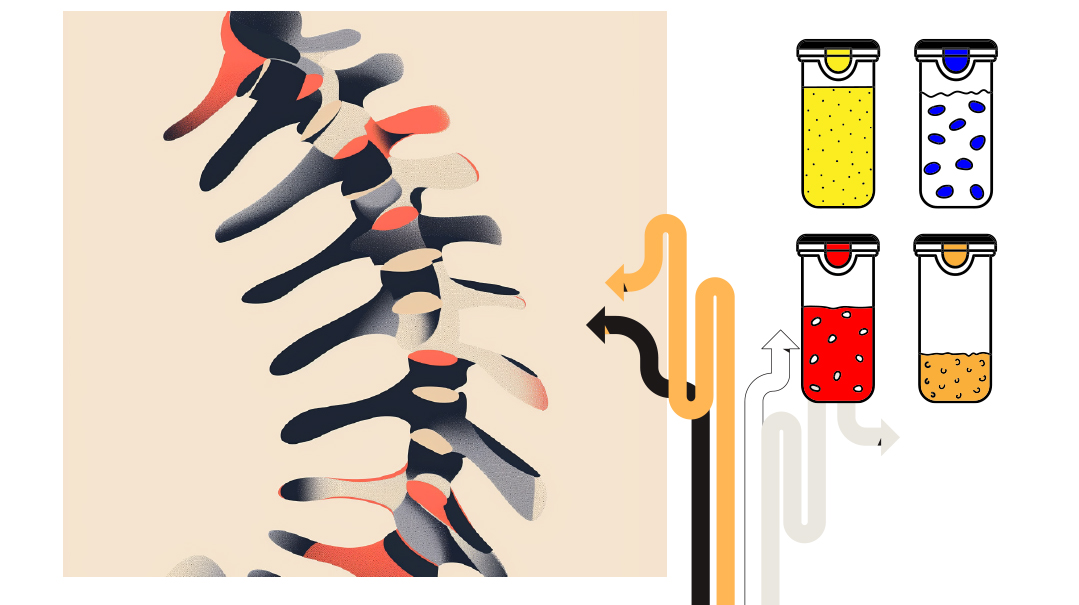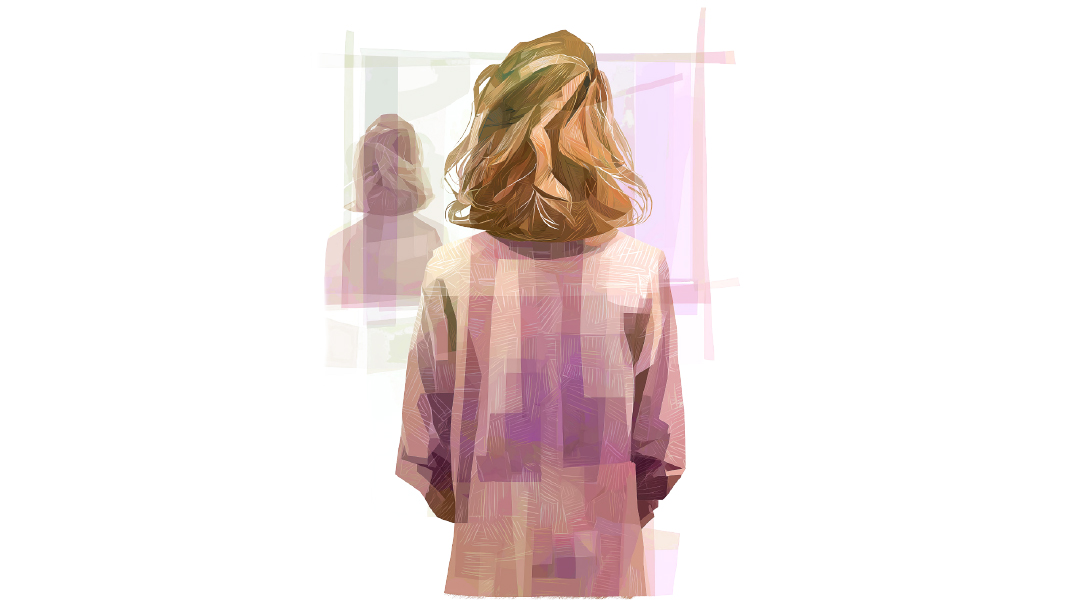Scoliosis Screening
| June 18, 2024Although poor posture can worsen existing scoliosis, it will not cause it to develop

Scoliosis Screening
Dr. Jennie Berkovich
S
coliosis is a sideways curvature of the spine that affects around two to three percent of the population, with close to three million new diagnoses each year. While it can occur at any age, it is most commonly diagnosed in children between ten and 12 years old. It may be unnoticeable or look like one shoulder is higher than the other, there is a hump on the back, or the child is slouching in one direction. There is typically no back pain or other symptoms.
While the exact cause of scoliosis is unknown, there are certain risk factors to be aware of. Scoliosis tends to run in families, and girls are also more likely to develop scoliosis than boys. Having neurological or muscular diseases like spina bifida, cerebral palsy, muscular dystrophy, or spinal muscular atrophy increases the risk of developing neuromuscular scoliosis. This is also true as a consequence of spinal injury or high-impact sports. Although poor posture can worsen existing scoliosis, it will not cause it to develop. (Sorry to break it to all the parents reminding their kids not to slouch!)
Scoliosis is typically classified based on the degree of curvature in the spine. Mild cases involve curves between ten and 25 degrees, moderate cases range from 25 to 40 degrees, and severe cases involve curves greater than 40 degrees.
The severity of the curve often determines the course of treatment. The degree of severity can also change, as scoliosis can worsen, especially when diagnosed in younger kids.
Screening for and diagnosing scoliosis are an important part of routine well visits because early detection is crucial for effective treatment. During routine checkups, your pediatrician will likely perform a simple screening test called the Adam’s Forward Bend Test. This usually starts at around age ten, when many kids experience a period of increased growth and involves observing the curvature of the spine while your child bends forward. Other exams include making sure abdominal reflexes are present and confirming that the legs are the same length.
There’s some controversy about how often this test should be performed, however, it’s generally done at least once during the middle school or adolescent well visit. If a curve is detected, further testing, such as X-rays, may be ordered to confirm the diagnosis and determine the degree of curvature.
Only a small percentage of scoliosis cases require treatment, but it’s important to follow your pediatrician’s recommendations. Very mild cases often don’t require any treatment and just need to be monitored. For mild to moderate curves, bracing can prevent further progression during the child’s growth spurts. Physical therapy is another option. Severe cases may require surgery to correct the curvature and prevent future complications. Leaving it untreated can lead to chronic back problems like pain, poor posture, breathing difficulty, and injury.
While scoliosis cannot be prevented, it is typically mild and treated conservatively. Surgical cases have outstanding success rates and treatments continue to evolve for even more minimally invasive techniques with faster recoveries.
Dr. Jennie Berkovich is a board-certified pediatrician in Chicago and serves as the Director of Education for the Jewish Orthodox Women's Medical Association (JOWMA)
Ode to Clear Plastic Bins
Hadassah Eventsur
When browsing the Internet and magazines for organizing ideas, you’ve likely come across the clear plastic bin. In the ads, these bins are perfectly aligned, beautifully displaying the food items in your pantry and other home essentials.
The clear plastic bin is a great choice for people who struggle with executive functioning. With working memory deficits, things that are out of sight tend to be out of mind. It’s helpful to have a visual cue that alerts you when you’re running low on a certain item, which clear plastic bins provide. In addition, when set up efficiently, they provide order and accessibility to items that would normally be lost in the shuffle.
However, using storage containers for items such as cereals, rice, and legumes requires that you remove them from their boxes prior and then empty them into the bins. This drains executive fuel. Picture yourself tired after a long shopping trip. Will you have the presence of mind to go through the steps required to fill these containers?
If not, then you may want to rethink using bins in this capacity. When you struggle with executive functioning, accessibility is vital, but minimizing the steps to get your items into their correct homes is of equal importance.
Hadassah Eventsur, MS, OTR/L is an occupational therapist and life coach in the Baltimore area. She is the founder of Mindfullyyou, a program that supports frum women struggling with executive functioning
A Thousand Choices
Sara Eisemann
“Look closely at the present you are constructing. It should look like the future you are dreaming.” —Anonymous
We sometimes forget that the culmination of a dream begins with laying a foundation to hold that dream and then a thousand choices we make, big and small, to build it. A home that radiates kedushah is a home that is built day by day, starting today, with decisions about what enters this home and what doesn’t. A warm, connected marriage requires a thousand choices that prioritize engagement and presence over convenience and distraction. Whatever the dream, it doesn’t materialize out of nowhere. Holding the future vision in front of us allows us to take our present steps.
Sara Eisemann, LMSW, ACSW, is a licensed therapist, Directed Dating coach and certified Core Mentor.
(Originally featured in Family First, Issue 898)
Oops! We could not locate your form.







